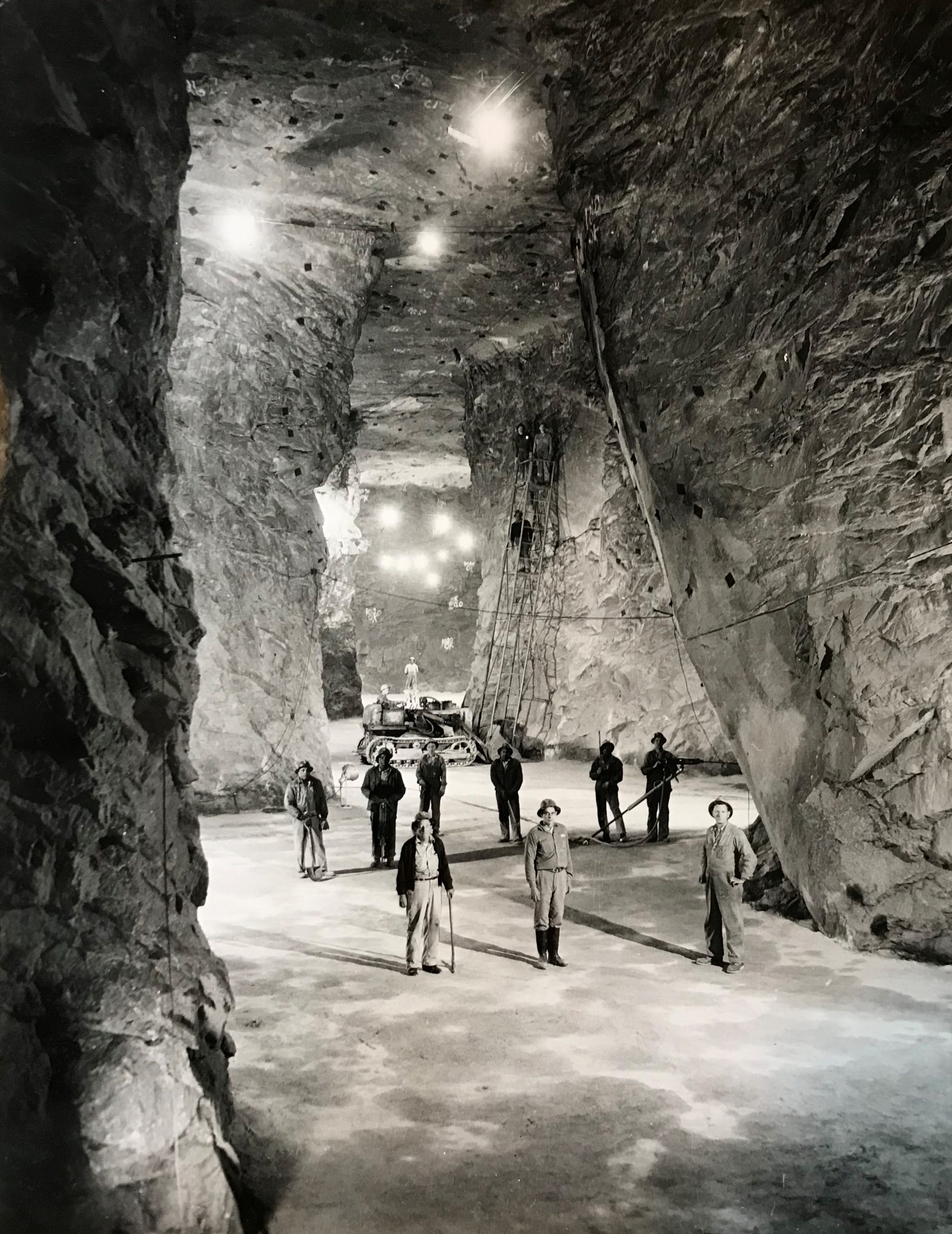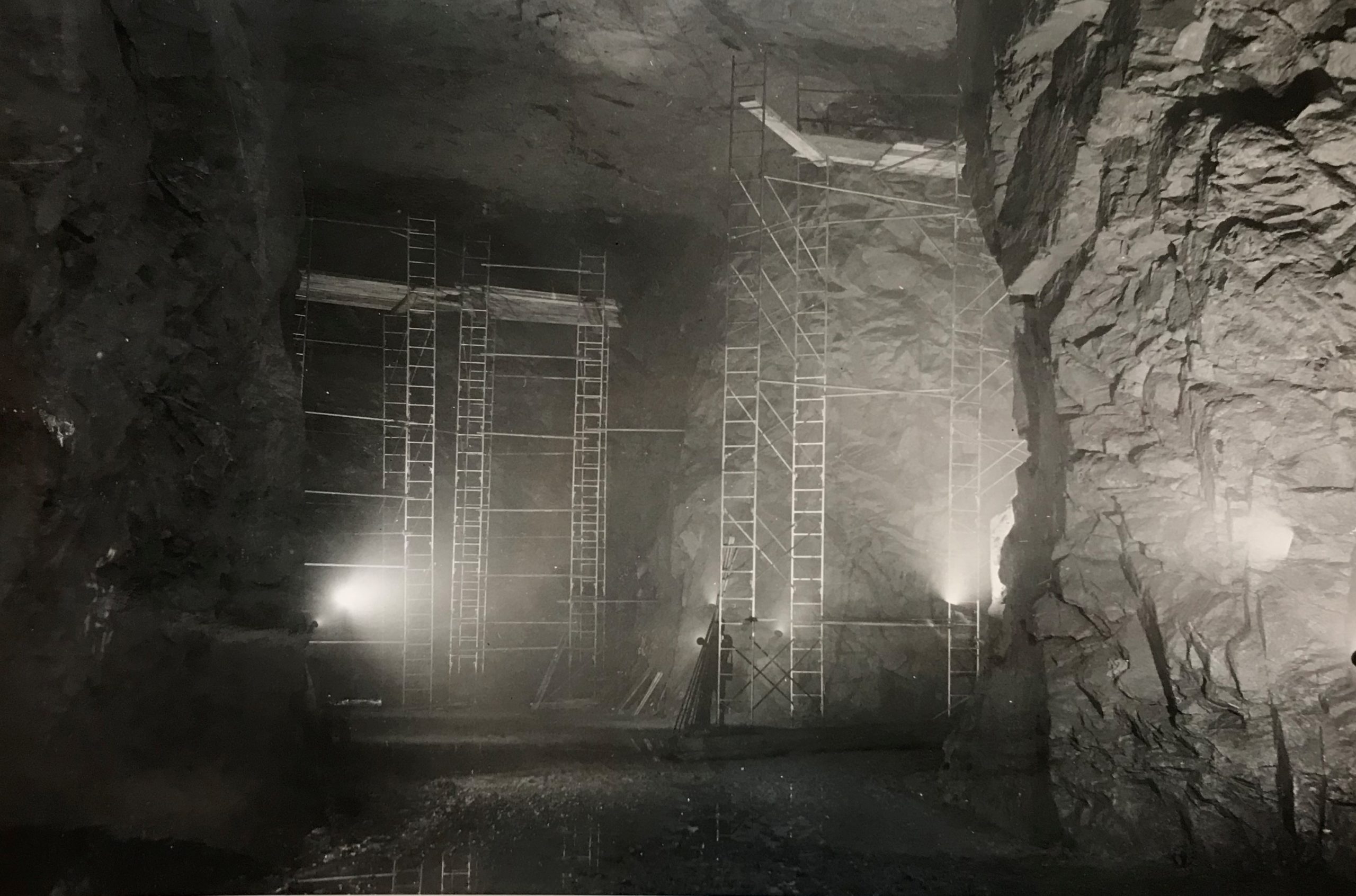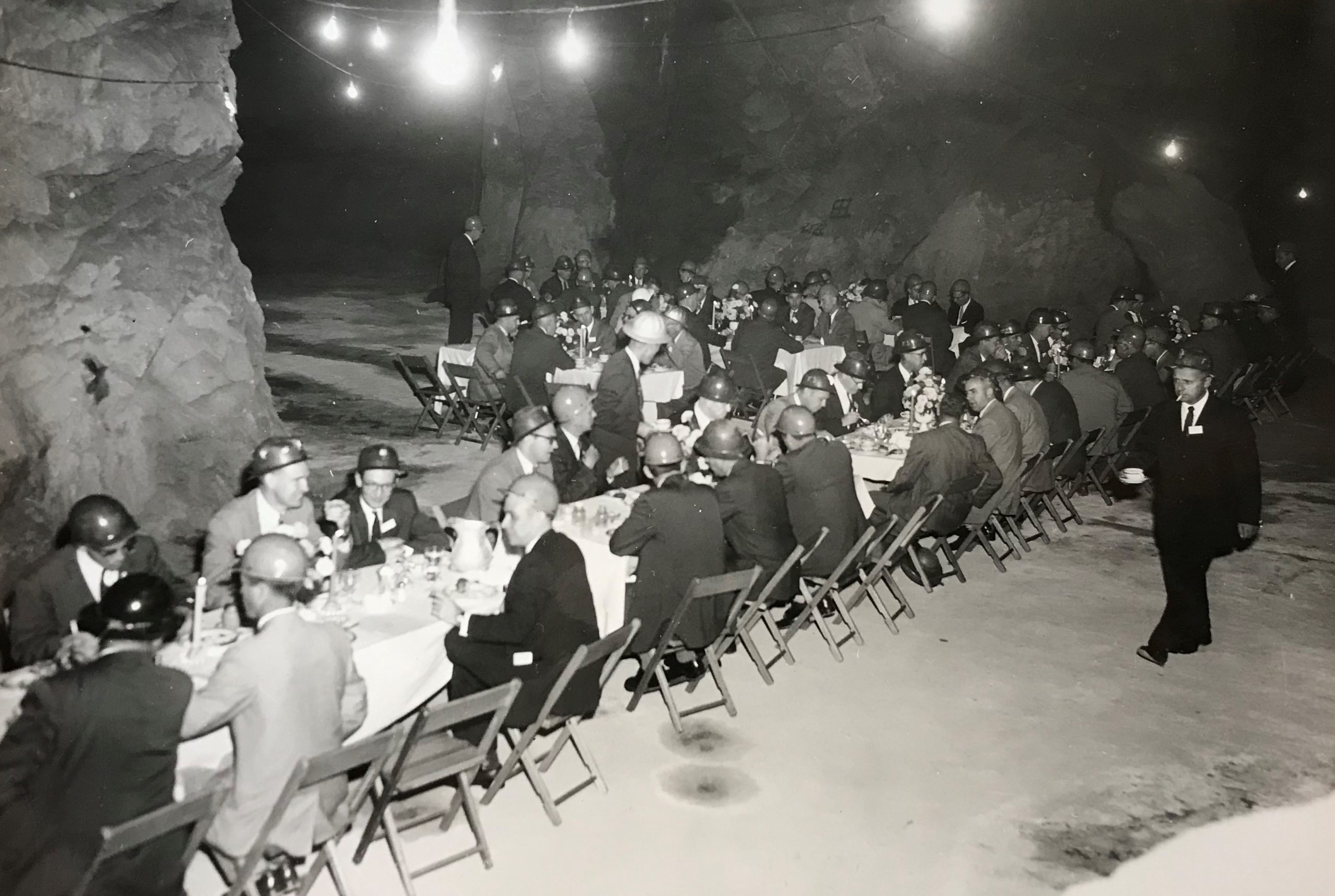Did you know Marcus Hook is home to one of the largest underground fuel storage facilities on the East Coast?
Hundreds of feet below-ground at the Energy Transfer Marcus Hook Terminal lie five caverns storing butane, propane and propylene. Built beginning in the late 1950s, four of them are still owned and operated by Energy Transfer, while the propylene cavern is now owned and operated by our Marcus Hook neighbor, Braskem.
The History
During the days of the former Sun Oil refinery, under the direction of Sun’s engineering consultant Patrick F. Dougherty, workers began mining the first underground storage cavern in 1957 after three years of study. The final cavern was placed into service in 1976. The caverns, carved from granite, were designed to store butane and propane at a time when these products were imported and needed to be stored as reserve supply. Now, the caverns have been repurposed for local and export distribution – marking a monumental shift in energy security over the last 40-50 years.
Originally, product was received at Marcus Hook by ship and was stored in the caverns until it was either used at refineries or delivered via pipeline. Today, propane and butane reach Marcus Hook through the Mariner East 2 pipeline system – from west to east. Product is stored until it is ultimately delivered to consumers.
The caverns took years to build, with workers and broken rock entering and/or exiting through a five-foot-wide shaft. Mining equipment had to be lowered piece-by-piece through the shaft and reassembled inside the caverns.
In 1960, Sun Oil employees and the cavern builders, Fenix & Scisson, hosted a celebratory banquet inside one of the caverns – 420 feet underground. About 200 guests entered the cavern through the narrow shaft for a tour and full-course meal, served by floodlight. Epic photographs from that day still appear in the halls of the Marcus Hook Terminal office building. At the time, Sun’s caverns at Marcus Hook were the world’s largest underground, man-made storage system.
To this day, no humans have entered the caverns since that celebration.
The Benefits
After propane and butane reach Marcus Hook through the Mariner East 2 pipeline system, the caverns are used as a safe, cost-effective way to store the product until it is ultimately delivered to consumers locally, regionally and overseas.
A team of Energy Transfer engineers supports the caverns’ daily operation, maintenance and equipment reliability through various safety checks. Deep-well pumps are used to pump the product to a surge drum located at the surface. The surge drum is used to remove water, and transfer pumps are then used to pump the product to its delivery destination – which can include domestic truck racks, pipelines, ships and railcars.
This massive storage facility paired with the expansion of the Mariner East pipeline system have allowed Energy Transfer to supply much of the local and regional propane demand each year. This has prevented a shortfall in supply following the closure of several refineries in the area. In fact, more than 90% of the propane sold from the Marcus Hook truck racks stays in the four-state region of Pennsylvania, Delaware, New Jersey and Maryland.










